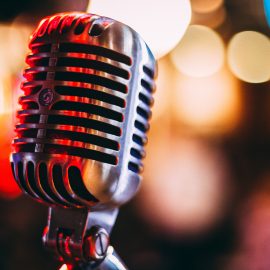
I thought the debate in the workshop would be about the nose ring. Or the combat boots. Or the casual attire. But the heated discussion was focused on an unconscious bias about headphones. This passionate debate was sparked by a video involving a Millennial job candidate used in an inclusion workshop. The two sides of the argument about whether or not headphones were disrespectful seemed to be separated by generation. Something seemingly innocuous – use of headphones – turned into something quite controversial.
Technology differences between Generations
Most discussions about generations in the workplace do more harm than good. The discussions tend to reinforce stereotypes instead of recognizing individual differences that exist in any generation. See my article “Millennial Should Not be a Bad Word” for more on this topic.
Even so, generations do differ in regards to technology. There is a profound difference between people raised as digital natives with continuous access to technology and those of us who are adapting as adults. Based on their dates of birth, Millennials grew up exposed to technology (smartphones, Google, email, texting, and more) that did not even exist when Gen X and Boomers were growing up.
Use of headphones in the workplace cause a passionate response from the different generations. Many Baby Boomers (born between 1946 and 1964) adamantly oppose any use of headphones. Whereas, most Millennials (born between 1981 and 2000) want full access to their headphones. Gen X (born between 1965 and 1980) favor the use of headphones in certain situations and not others.

Can response to headphone use show unconscious bias?
In many office jobs, employees might wear headphones to listen to music while the work, to block out noise or to learn through podcasts. They can perform – and maybe even perform better – while using headphones. Every company approaches this differently – some allow the use of headphones, and some restrict or prohibit the use. Sometimes there is not a company policy and headphone use becomes a topic for debate. Policy or not, it turns out that some people have strong feelings about the use of headphones. Those strong feeling could lead to unconscious bias.
What is unconscious bias?
Unconscious bias occurs when a person unintentionally reacts to something based on personal filters and preferences that have been cemented during their life. Unconscious biases can be positive or negative. Biases become problems when they influence workplace decisions and negatively impact other people. In this case, one person could perceive headphone use as a sign of goofing off or disrespect. This judgement could lead to bad outcomes – such as losing a job opportunity.
Do you judge people negatively for using headphones in work situations?
Do you see use of headphones as disrespectful or inappropriate regardless of the situation? If yes, you might have an unconscious bias.
One example of the headphone controversy
The inclusion workshop referenced earlier included videos of several workplace scenarios involving unconscious bias. In the workshop, we discussed the scenarios and then taught strategies for overcoming unconscious biases. One scenario showed an older man interviewing a young woman — his bias was that he will not hire anyone under 30 years old.

This scenario had many potentially controversial elements. The job candidate in the video was qualified for the job. She was also young and wearing an interview outfit that included combat boots and a nose ring. The interviewer’s unconscious bias against younger people was the focus of the scenario.
When asked what the participants thought the interviewer was thinking, the discussion split on generational lines. None of the participants claimed to have a bias against young people. They also did not seem concerned about the informal clothing or nose ring.
But many of the older participants were appalled by the fact that the fictional job candidate was using earbud headphones in the reception area before the interview.
Strong reactions to headphone use

The headphone disagreements were not mild. Some participants had a dramatically negative reactions – including raised voices and passionate discussion. One senior leader said that he agreed with the biased interviewer and would not hire the candidate because of the headphones. By stark contrast, Millennial participants didn’t even understand why the headphones were a point of discussion. One group felt passionate, and the other group just felt perplexed.
For some people wearing headphones before an interview seem to be displaying a lack of respect or immature behavior. That disrespect branded the candidate negatively. Wearing headphones triggered an unconscious bias to view the candidate as disrespectful and ended her chances of getting hired.
Many workplace practices – such as the use of headphones – have evolved over time. It is time to revisit the use headphones at work.
Sometimes headphones need to be restricted

Some workplaces do not allow employees to use headphones, often for reasons related to safety or the nature of the work. For example, in a warehouse or manufacturing facility, workers need to be able to hear the warning beeps of a forklift backing up or the alarm of a machine that is out of order. For safety and productivity reasons, the company prohibits headphones in these environments. Headphones might also be restricted in jobs working directly with customers — in sales or retail or restaurants. Those employees need to be aware, available and interacting at all times. Those are good reasons to restrict the use of headphones at work. But many work environments don’t have those restrictions…
What is the value of headphones at work?
In many workplaces, headphones help employees stay focused and engaged. Some people think that everyone using headphones is goofing off. But the reality is that headphones can help many people concentrate and stay on task.
The rise of open offices makes headphones even more important. In these work spaces, there are no walls or doors — not even cubicle separators. They are designed to break down hierarchy, to get everyone collaborating and to create constant communication.
The challenge is how employees are supposed to get any work done if there is constant noise, movement and talking. Sounds like chaos. Headphones might be the only salvation in an open concept workplace. Communication and interaction will still happen in meetings or by email or by instant messaging. And co-workers can always tap someone gently on the shoulder to get their attention and start a conversation in person.

Release your bias against headphones
Whether you personally use headphones or not, recognize that their use has evolved and they are now part of the workplace.
Evaluate people by their skills and performance – not by their technology preferences.
The great headphone controversy surprised me. Headphone usage now has the dubious honor of being added my list of “seemingly innocuous but surprisingly divisive” workplace topics. That list includes other controversies such as heating up fish in the shared microwave, rearranging seating assignments, the value of team building activities and cleaning up dishes in the shared kitchen. Who knew?




Ann- this is illuminating. The idea had not crossed my mind. There is so much bias out there, and it does seem when I have held workshops to discuss generational bias, there is a lot of defensive behavior supporting their generation’s specific behavior. Thank you